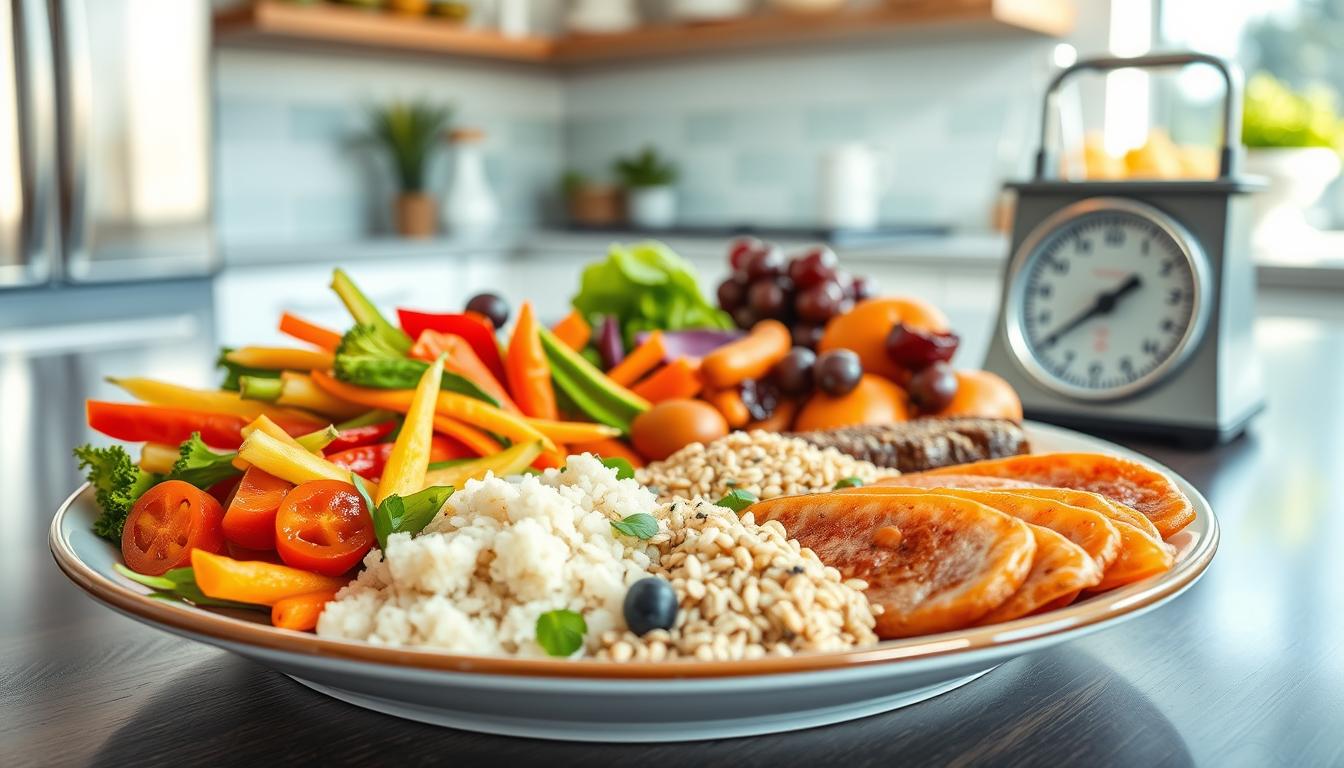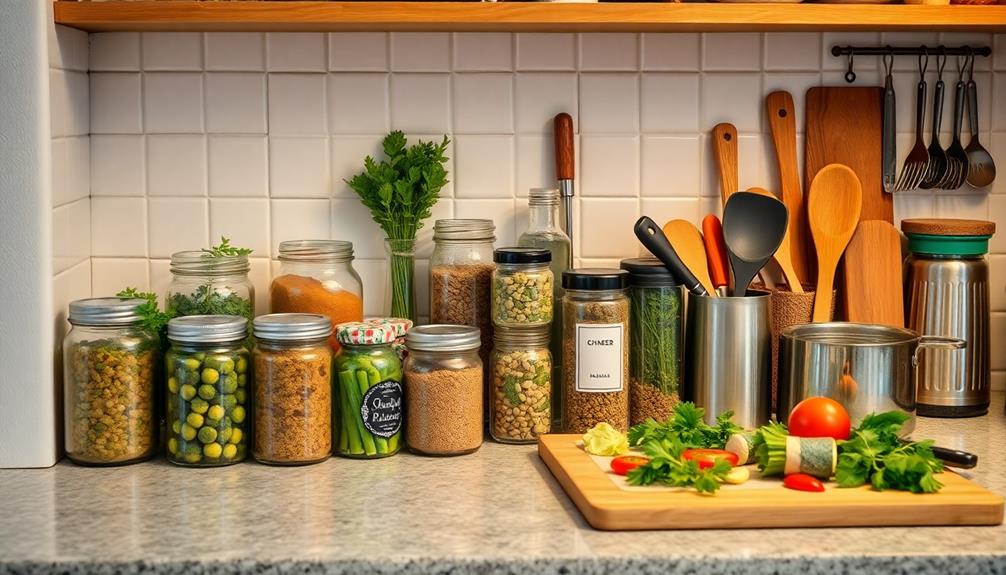Imagine stepping into a bustling farmer’s market on a bright Saturday morning, the sun dancing on vibrant fruits and vegetables, each bursting with a freshness that is hard to replicate. This is the essence of farm-to-table cooking—a culinary journey that not only tantalizes your taste buds but also reconnects you with the roots of local agriculture. You may find yourself pulled into heartfelt conversations with farmers about their sustainable practices, hearing the stories behind the food you’re about to savor. This is more than just eating; it’s about embracing fresh ingredients that foster community ties and promote sustainable cooking.
The rise of farm-to-table dining has revolutionized the way we think about our meals, especially as its popularity surges across the globe. In Southeast Asia alone, there has been a 30% increase in farm-to-table restaurants over the past five years, with the market projected to reach a staggering USD 622 billion. This movement reflects a growing demand for wholesome, ethically sourced food, ensuring that the produce on your plate isn’t just delicious but contributes positively to the environment and the local economy.
As you dive deeper into the world of farm-to-table cooking, you’ll discover not only the flavors of seasonal dishes but also the deep-rooted connections to your community. Let this journey inspire you to embrace a culinary approach that is not only satisfying but also enriching for your soul. Explore your local farmer’s markets and get to know the people behind the fresh produce and meats that will inspire your quick dinner ideas. By supporting local farmers and businesses, you’ll not only enjoy the freshest ingredients but also contribute to the sustainability of your community. With your newfound culinary skills and knowledge of seasonal ingredients, you’ll be able to whip up quick dinner ideas that are not only delicious but also nourishing for both your body and your spirit.
Key Takeaways
- Farm-to-table cooking enhances the flavor and nutritional value of your meals.
- Eating locally sourced produce supports the local economy and fosters community relationships.
- Engaging with farmers can deepen your appreciation for where your food comes from.
- Farm-to-table practices promote sustainable cooking and reduce your carbon footprint.
- Cooking with seasonal ingredients allows for culinary creativity and variety.
Understanding Farm-to-Table Cooking
Farm-to-table cooking represents a culinary movement emphasizing the use of locally sourced ingredients. This approach fosters a genuine connection between consumers and farmers, contributing to healthier eating habits and supporting local economies. You benefit when restaurants prioritize fresh ingredients that have been harvested just hours before reaching your plate. Such local sourcing not only reduces the transportation footprint but ensures vibrant flavors and higher nutritional value.
The origins of the farm-to-table movement can be traced back to a growing awareness in the 1960s and 1970s as consumers sought alternatives to processed foods. Chef Alice Waters, through her innovative restaurant Chez Panisse, played a crucial role in popularizing this concept by championing the use of seasonal produce grown by local farmers. As the food system evolved, adjustments were necessary, leading to collaborations where farms produce specific items requested by chefs. These partnerships have profound financial benefits for farmers, enabling them to earn more per sale compared to traditional distribution models.
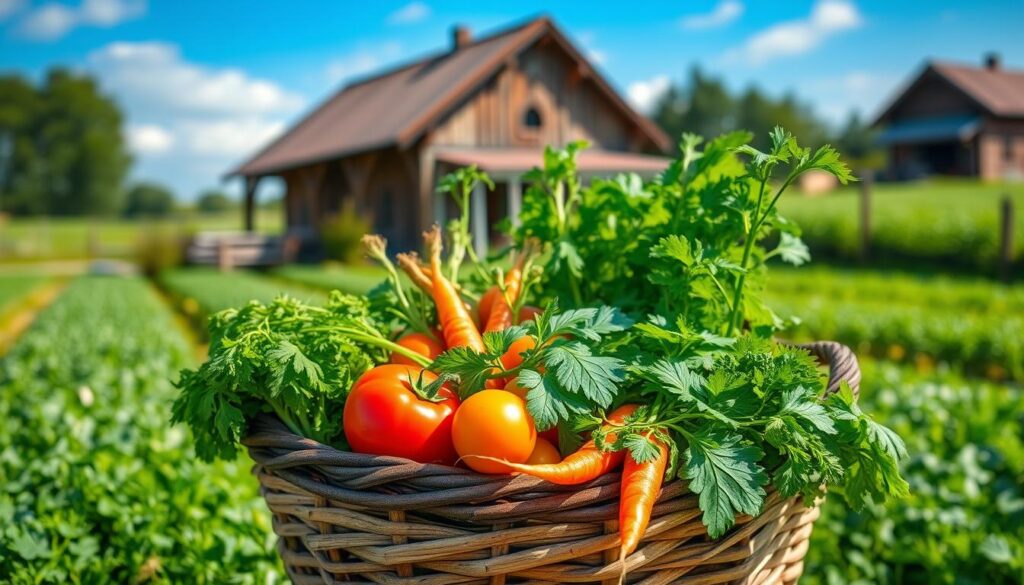
Despite its benefits, the term “farm-to-table” is sometimes overused. Authenticity matters, and anyone claiming this label should be able to identify the farms they source from directly. For instance, Oregon’s zoning laws help preserve farmland, establishing essential connections between small farms and urban restaurants in cities like Portland. This synergy facilitates a vibrant food culture, where creative chefs can adapt their menus based on seasonal availability. A true farm-to-table kitchen sees menus evolving gradually, as chefs work with what’s fresh rather than imposing strict limitations.
| Decade | Key Event |
|---|---|
| 1915 | U.S. Postal Service initiated food shipments from farms to cities via parcel post. |
| 1940s | Population shift towards urban centers decreased direct access to farms. |
| 1950s | Introduction of commercially processed, canned, and frozen foods. |
| 1960s | Growing consumer interest in alternatives to supermarket produce. |
| 1971 | Chez Panisse was opened, signaling a shift toward farm-to-table dining. |
| 2007 | Establishment of National Farm to School Network to connect schools with local food sources. |
In summary, the farm-to-table movement embodies a shift towards sustainability and creativity in cooking. This approach emphasizes unique flavors, seasonal variety, and the importance of supporting local farmers, all while producing delightful, organic recipes that elevate your dining experience.
Benefits of Cooking with Farm-Fresh Ingredients
Cooking with farm-fresh ingredients brings a host of benefits that elevate both the taste and nutrition of your meals. Freshly harvested produce contributes significantly to your culinary experience, providing vibrant flavors that burst with intensity. Incorporating these ingredients into your cooking allows you to connect with the local food movement while enhancing your diet.
Bursting with Flavor
Farm-fresh ingredients are typically picked at the peak of ripeness. This timing preserves their full flavor profile, offering an unparalleled taste experience. Locally sourced foods, often found in farm-to-table restaurants, travel shorter distances, allowing them to maintain their appearance and nutrients. This results in dishes that not only look appealing but are packed with the robust flavors that only fresh produce can offer.
Enhanced Nutrition
Choosing to cook with fresh ingredients can significantly improve your nutrition. The shorter time between harvest and consumption means that local produce retains more vitamins and antioxidants compared to items that have been shipped long distances. Farm-fresh options often feature fewer pesticides and preservatives, promoting a healthier lifestyle. By supporting local farms, you contribute to sustainable practices while reaping the health benefits of eating nutrient-rich foods.
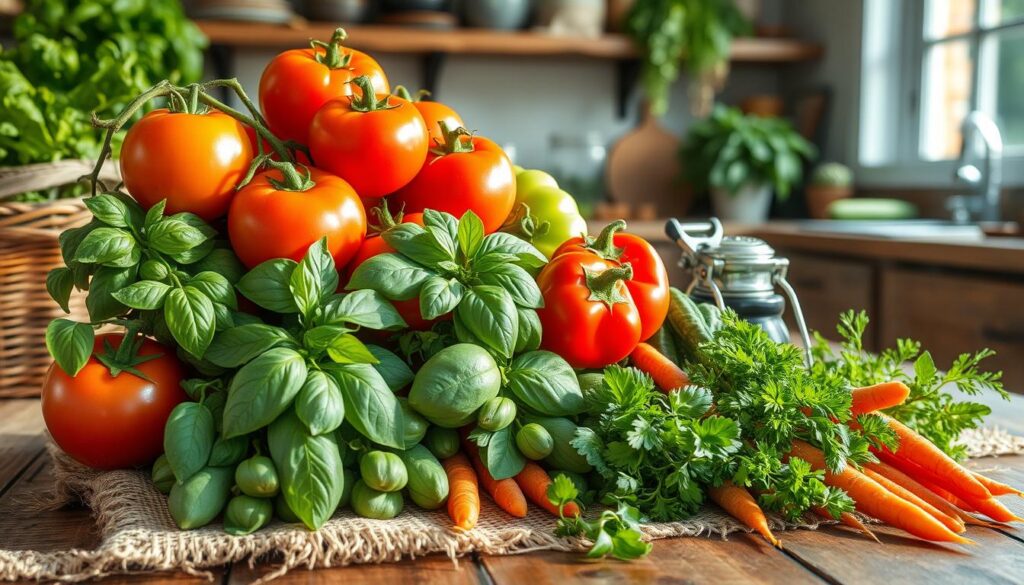
| Type of Ingredient | Flavor Profile | Nutrient Retention |
|---|---|---|
| Locally Sourced Vegetables | Vibrant and Fresh | High |
| Imported Vegetables | Often Dull | Low |
| Organic Farm Produce | Rich and Robust | Very High |
| Packaged Produce | Variable | Variable |
Support for Local Farmers and Communities
Engaging with local farmers impacts not just their livelihoods but also promotes a vibrant community. The farm-to-table movement encourages you to buy locally sourced ingredients, which directly supports local farmers. This choice creates ripple effects in the community, fostering economic growth and sustainability.

Understanding sustainable agriculture is vital as it helps cultivate cooperative relationships among growers, food service professionals, and consumers. Establishing these connections results in reliable sources of fresh, high-quality produce, making it easier to plan healthy, seasonal menus.
Participating in community-supported agriculture (CSA) initiatives offers consumers affordable access to fresh food while ensuring the financial sustainability of local farms. These programs enhance community engagement, allowing you to contribute actively to local agricultural efforts.
Farmers markets play a crucial role by not only providing a variety of local foods but also enabling consumers to have a direct connection with where their food originates. By visiting these markets, you support local farmers while enjoying the freshest produce available.
| Aspect | Impact |
|---|---|
| Support for Local Farmers | Strengthens the local economy and enhances food quality. |
| Community Engagement | Fosters relationships and builds trust among consumers and producers. |
| Sustainable Practices | Promotes eco-friendly farming methods and reduces food transportation emissions. |
| Access to Fresh Produce | Improves nutrition and meal variety through seasonal selections. |
In your choices, supporting local farmers not only nourishes your body with fresh ingredients but also enriches the community. This commitment to sustainable agriculture leads to a healthier environment and a more resilient economy for everyone involved.
Exploring Seasonal Dishes
Seasonal dishes provide an opportunity to celebrate the changing bounty of each season. Fresh local produce captures the essence of what’s available, creating vibrant flavors that enhance your meals. Each season brings new ingredients, allowing for creativity in your culinary repertoire. You can explore unique regional specialties that make every dish a delightful experience.
Embracing the Beauty of Seasonal Variety
Cooking with seasonal ingredients not only elevates taste but also supports your local economy. Utilizing local produce fosters a connection between the consumer and the farmer, enhancing the overall dining experience. Seasonal cooking encourages you to be mindful of what you eat, aligning your meals with the agricultural rhythm in your area. This practice reduces environmental impact, as it minimizes the carbon footprint associated with transporting food over long distances.
Creating Culinary Garden Recipes
Designing culinary garden recipes can be an exciting way to transform fresh produce from your garden or local farmers’ markets into memorable dishes. Think about incorporating herbs, vegetables, and fruits that thrive during specific seasons, which results in flavors that sing with freshness. Here are some ideas to get you started:
- Spring: Asparagus and Pea Risotto
- Summer: Caprese Salad with Heirloom Tomatoes
- Autumn: Butternut Squash and Apple Soup
- Winter: Root Vegetable Gratin
By experimenting with various seasonal dishes, you can uncover the richness of local produce. Not only does this emphasis on freshness enhance your meals, but it also cultivates a deeper appreciation for the agricultural systems in your community.
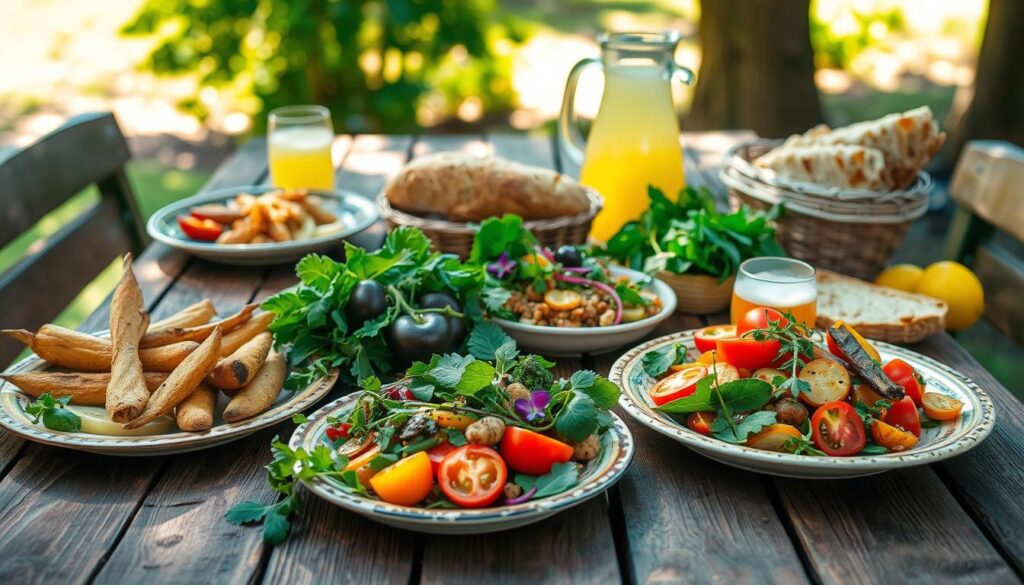
| Season | Featured Local Produce | Suggested Dishes |
|---|---|---|
| Spring | Asparagus, Spinach, Strawberries | Spring Vegetable Quiche, Strawberry Spinach Salad |
| Summer | Tomatoes, Zucchini, Peppers | Grilled Ratatouille, Summer Pasta Salad |
| Autumn | Pumpkin, Apples, Beets | Pumpkin Soup, Roasted Beet Salad |
| Winter | Kale, Citrus, Root Vegetables | Winter Citrus Salad, Kale and Potato Soup |
Culinary Creativity through Fresh Produce
Embracing fresh produce opens doors to a world of culinary creativity. The vibrant colors and unique textures of seasonal fruits and vegetables encourage you to explore new recipes. Engaging with fresh ingredients transforms cooking from a routine into a delightful adventure, allowing you to experiment with innovative recipes that highlight the freshness of your ingredients.
Experimenting with New Ingredients
With fresh produce readily available, there are endless possibilities for incorporating new ingredients into your dishes. You can take inspiration from local farmers’ markets, where intriguing varieties of fruits and vegetables often catch your eye. Here are some tips to make the most of your fresh finds:
- Look for vibrant colors: Brightly colored produce often signifies higher nutrient levels and better flavor.
- Check for firmness: Fresh ingredients should feel solid and free of bruises, ensuring quality for your culinary creations.
- Try basic cooking techniques: Roasting, grilling, and broiling can elevate the natural flavors of your fresh produce.
- Keep it simple: Sometimes, the best dishes come from minimal ingredients that shine on their own.
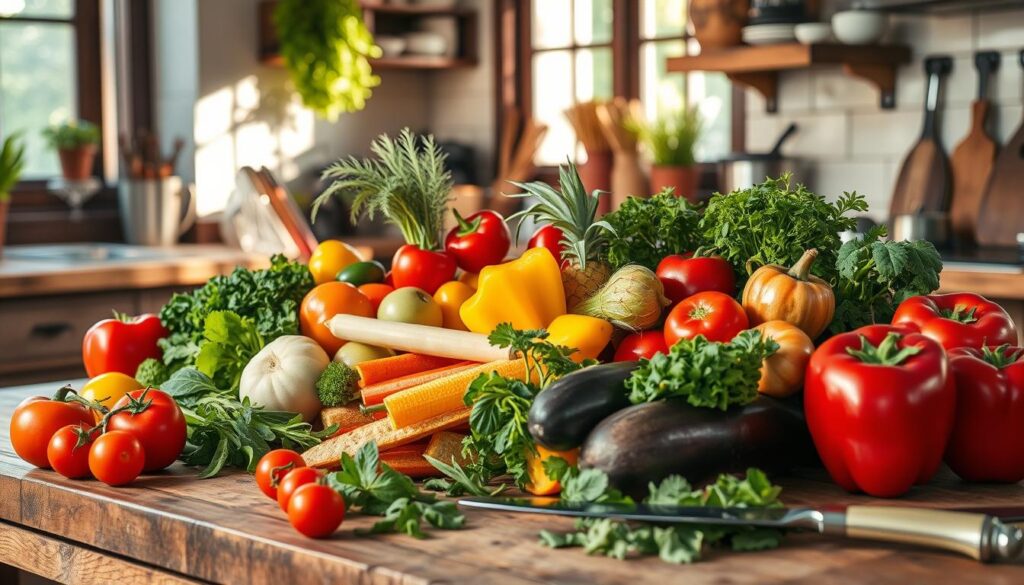
Remember to store your fresh produce appropriately to maintain its quality. For example, let fruits ripen at room temperature while keeping vegetables chilled in the refrigerator. Washing produce should only be done just before use to prevent premature spoilage. Organic fruits and vegetables not only taste better but also reduce chemical exposure, making your meals healthier.
By blending culinary creativity with fresh produce from local sources, you not only enhance the flavors but also contribute to a healthier lifestyle. This approach can guide you toward discovering innovative recipes that make every meal exciting and unique.
Better for the Environment
Farm-to-table cooking embodies a commitment to sustainability by emphasizing local sourcing. When you choose local produce, you engage in eco-friendly cooking that significantly reduces the environmental impact of food transportation. Produce sourced from nearby farms travels shorter distances to reach your table, minimizing food miles and lowering greenhouse gas emissions compared to items shipped from far-off places.
Furthermore, smaller sustainable farms often practice healthy crop rotation, resulting in more nutritious crops. Such farming techniques promote biodiversity and contribute to healthier ecosystems. Local produce is harvested at its peak ripeness, preserving as many nutrients as possible, which is often not the case for conventional crops that must endure long transit times.
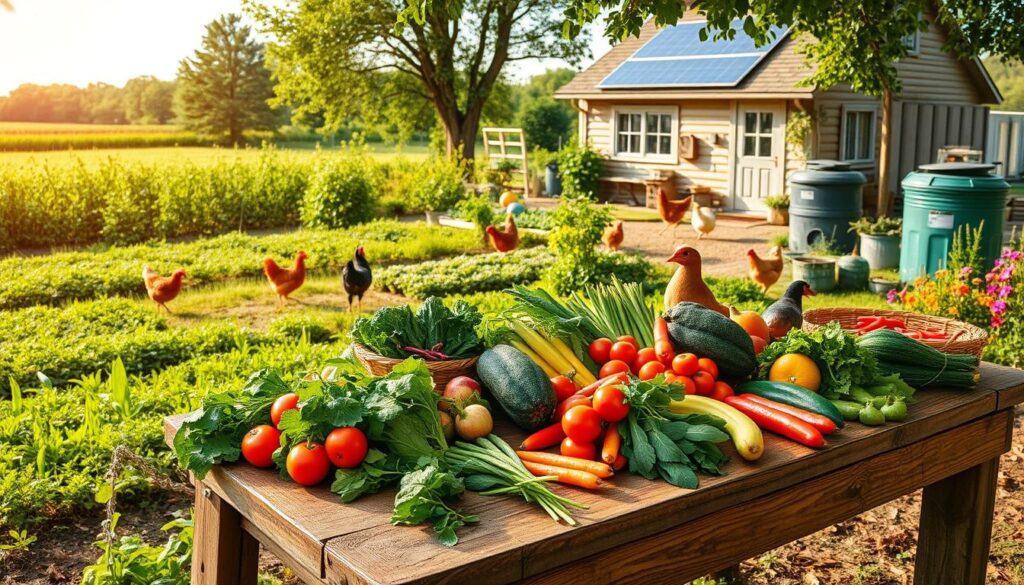
By supporting local farmers, you help sustain their families and communities. This approach fosters a sense of connection and responsibility, ensuring that agriculture remains viable in your area. When chefs and consumers prioritize sustainability, they champion practices that reduce food waste and encourage the use of energy-efficient kitchen appliances.
Here are some practical steps to enhance your eco-friendly cooking initiatives:
- Seek out farmers’ markets to connect with local producers.
- Purchase staple items locally to support the community.
- Build relationships with local farmers for access to seasonal produce.
Embracing these practices leads not just to better meals but contributes to a healthier planet. Shifting towards plant-based diets can notably minimize your carbon footprint, as highlighted by chefs advocating for sustainable menus. You step into a larger movement by making conscious food choices and advocating for environmentally responsible practices in your culinary adventures.
| Sustainable Practice | Environmental Benefit |
|---|---|
| Local Sourcing | Reduces greenhouse gas emissions. |
| Crop Rotation | Enhances biodiversity and crop nutrition. |
| Plant-Based Menus | Reduces carbon footprint tied to meat production. |
| Energy-Efficient Appliances | Lowers energy consumption in kitchens. |
| Reduction of Food Waste | Minimizes landfill contributions and waste costs. |
Building Community through Farm-to-Table Experiences
Engaging in farm-to-table experiences enhances community building by connecting individuals who are passionate about local food. Participating in events such as farmers’ markets or cooking classes allows you to make local connections while sharing delicious recipes and the culinary knowledge behind them. These activities not only foster a sense of camaraderie but also promote cultural exchange among those involved.
For instance, farmers’ markets offer a unique setting where consumers and producers come together. Here, the enthusiasm for fresh, locally sourced food creates an inviting atmosphere. Over 75% of consumers express a willingness to pay more for such products, reflecting a growing awareness of their importance in supporting local economies.
Restaurants like Elderberry Pond in Auburn exemplify the essence of community through their commitment to sourcing ingredients from their 36-acre organic farm. By visiting places like these, you contribute to sustainable practices while enjoying meals made with love and care. Furthermore, Potters Farm to Fork has quickly become a favorite, highlighting local cheese, beef, and potatoes that celebrate the region’s agricultural diversity.
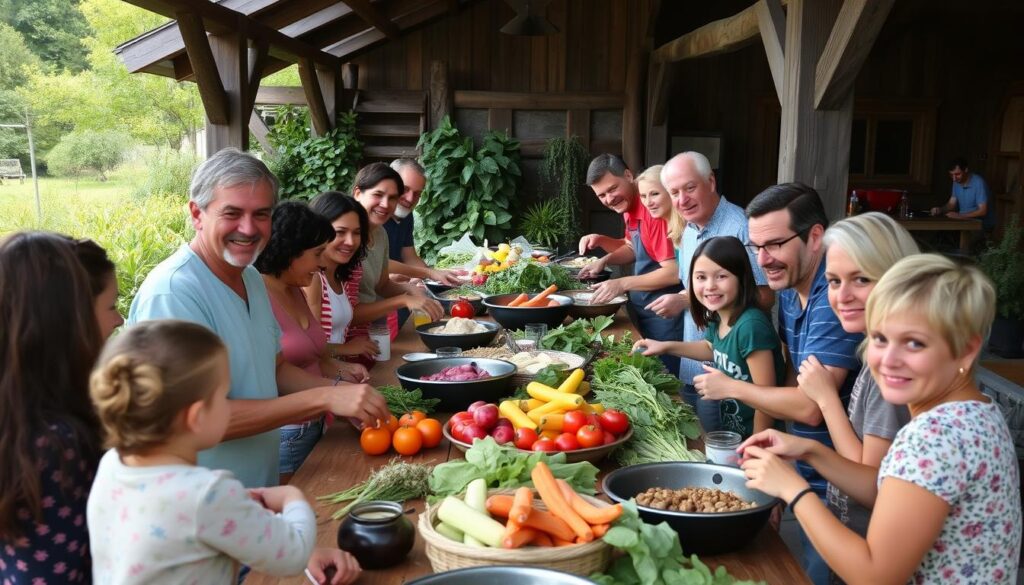
Ultimately, building a community around farm-to-table cooking not only benefits individual health but also reinforces the bonds within the community. Supporting local initiatives strengthens the network of farmers, chefs, and consumers dedicated to sustainable practices and farm-to-table experiences. This collaboration enriches the local food system while creating lasting relationships between all participants involved.
Signature Farm-to-Table Cooking Events
Signature farm-to-table events provide you with opportunities to experience immersive dining that highlights the flavors of local ingredients. These culinary tourism experiences allow you to connect with local farms and chefs, enjoying delicious meals crafted with fresh produce. Events not only focus on food but also emphasize the importance of community engagement and the stories behind the ingredients.
Immersive Experiences at Local Farms
Experiencing farm-to-table events, such as the Appalachian Pie Supper or Dinner on the Farm, immerses you in the agricultural landscape. You have the chance to interact with farmers and learn about the growth processes of local produce. This connection to the source enhances your appreciation of culinary tourism, turning meals into memorable experiences. Noteworthy events like the Root to Table Culinary Series offer you unique discussions with chefs, enriching your understanding of the farm-to-table philosophy.
Successful Farm-to-Table Initiatives
Ingredients sourced directly from local farms form the backbone of successful culinary events. The blend of community spirit and fresh produce creates an inviting atmosphere. Initiatives such as Catering by Seasons, recognized as the only 4-Star green caterer on the East Coast, serve as prime examples of this approach. Executive Chef Kyle Vermeulen’s innovative menus elevate traditional favorites for events like the Thanksgiving menu in 2024 as chefs showcase their creativity. Engaging in these farm-to-table events not only satisfies your palate but fosters a sense of connection with your local food community.

Homegrown Meals: A Personal Touch
Preparing homegrown meals using fresh ingredients adds a unique and personal touch to your cooking. Infusing your dishes with personal recipes that reflect family traditions can deepen your connection to heritage. Each recipe tells a story, much like a culinary scrapbook, preserving flavors that link generations.
When you choose to incorporate seasonal produce into your homegrown meals, you not only enhance the meal’s flavor but also celebrate the bounty of your local community. Homegrown meals showcase the effort and creativity invested in sourcing ingredients, transforming each dish into a heartfelt tribute to your culinary love and care. This commitment to meals that celebrate family traditions enriches your dining experience, transforming it into a moment that resonates with nostalgia and warmth.
The beauty of homegrown meals lies in their versatility. Whether you follow cherished family traditions or craft new personal recipes, each choice makes your cooking deeply satisfying. The impact of these meals extends beyond flavor; they nourish relationships and create lasting memories. Enjoying these moments around the table fosters togetherness and promotes a genuine appreciation for the ingredients that make each dish remarkable.
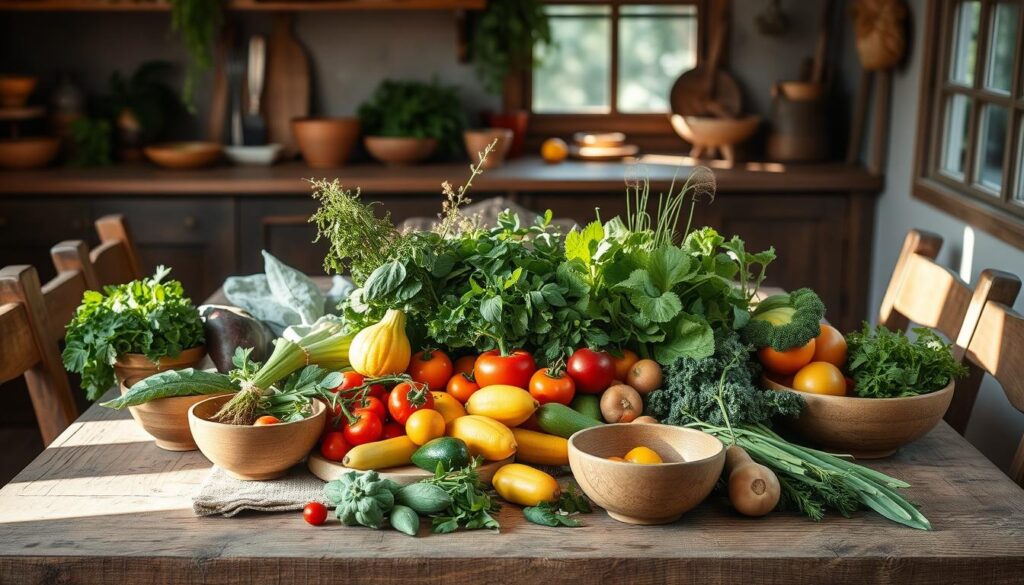
Recognizing the Rich History of Farm-to-Table Dinners
The history of farm-to-table dining reveals a rich tapestry woven from agricultural roots and a growing awareness of sustainable food systems. Renowned for its culinary origins, this movement burgeoned significantly during the counter-cultural shifts of the 1960s and 1970s, embracing the ideals inspired by the hippie movement, which emphasized local and organic food choices. Alice Waters, through her iconic establishment Chez Panisse, played a pivotal role in advocating for locally sourced ingredients, setting a benchmark for contemporary local dining.
Understandably, the evolution of this movement reflects broader societal changes. As consumers became more conscious of food origins, the demand for fresh, sustainable ingredients surged. As of 2018, over 1,200 school districts in the U.S. forged partnerships with local farms to enrich school meals, fostering an appreciation for the history of farm-to-table practices in young diners.
The statistics surrounding agricultural practices paint a striking picture: from 1900 to today, the U.S. has experienced a 63% decrease in the number of farms, while farm sizes have grown by 67%. In 1940, one farmer nourished approximately 19 people; by 2013, that number escalated to about 168. Such changes highlight the bridging of new agricultural techniques with traditional methods in a landscape shaped by an increasing population.
The ongoing farm-to-table movement is a response to environmental challenges, guiding consumers to consider ‘food miles’ and ‘carbon footprints’ in their choices. This sustainable ethos is not perceived as a mere trend but rather as a transformative approach destined to reshape culinary habits and food systems for years to come. Supporting local dining not only cultivates economic growth for communities but also honors the enduring legacy and history of farm-to-table dining.

Conclusion
Embracing farm-to-table cooking offers numerous advantages that resonate with your palate, your community, and the planet. The noticeable shift in consumer behavior towards sustainable food choices showcases a deeper appreciation for fresh, flavorful ingredients that come directly from local farms. By choosing farm-to-table practices, you not only enjoy meals brimming with enhanced nutrition and taste but also contribute to the economic vitality of your local community.
Local sourcing plays a crucial role in the farm-to-table movement, reducing the carbon footprint typically associated with long-distance food transportation. This commitment to sustainability not only fosters an appreciation for seasonal ingredients—cycling in diverse menus throughout the year—but also supports ethical farming practices. As you explore the culinary landscape, the growing trend of restaurants prioritizing farm-to-table cooking highlights a promising future of dining that values connections between consumers and local producers.
Ultimately, integrating these sustainable food choices into your daily life cultivates a brighter culinary future. As you champion local farmers and the environment, you create compelling bonds that deepen your connection to the community around you. Make the transition to farm-to-table cooking today, and enjoy not only exceptional flavors but also the satisfaction of making a positive impact on the world.




